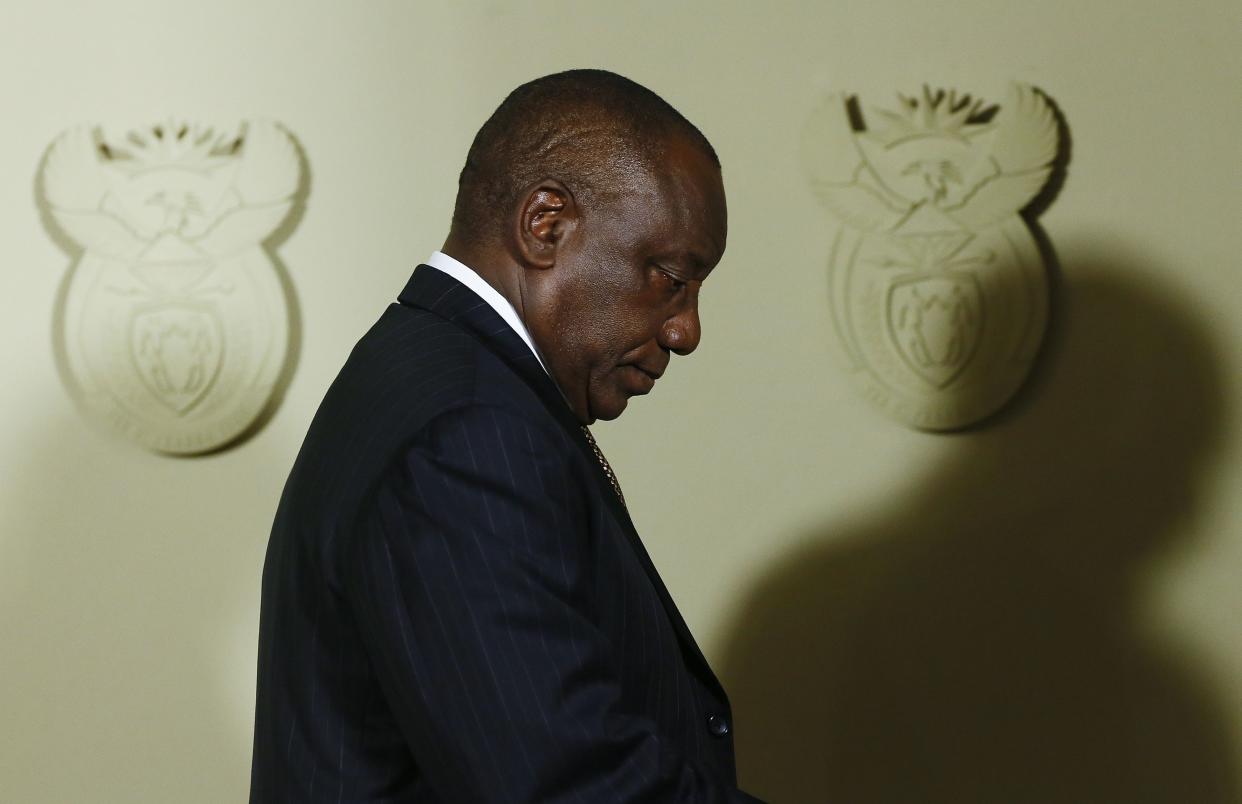Cash-Strapped South Africa Seeks Spending Cuts, Putting Ramaphosa in Tough Position

- Oops!Something went wrong.Please try again later.
(Bloomberg) -- South Africa’s cash-strapped National Treasury will present President Cyril Ramaphosa with a money-saving plan to cut the number of government departments and state-owned entities.
Most Read from Bloomberg
China Flags ‘Security Incidents’ With iPhones as Bans Expand
Luxury Cruise Ship Full of Australians Stuck in Greenland Arctic
iPhone Pro’s Titanium Finish Stands Out in First Look at Device
AT&T, T-Mobile Offer Free iPhone 15 in Lure for New Subscribers
The country, weighed down by a hefty budget deficit, must either boost tax revenues or issue more debt if the government fails to trim spending, newly minted National Treasury Director-General Duncan Pieterse told reporters on Tuesday.
“Not dealing with inefficient spending and not reconfiguring the state means you have to borrow more or increase taxes,” Pieterse said during an online briefing. “Both options have their own difficult and negative consequences in this environment, where debt-service cost is much higher than many parts of the budget.”
Concern over the country’s tough fiscal outlook hit South African bonds earlier on Tuesday after he confirmed that the state was already facing “resistance” from investors to increased issuance.
Read more: South African Bonds Extend Losses as Tax Shock Strains Budget
The plan will be presented to the president before a mini-budget scheduled for Nov. 1 at which Finance Minister Enoch Godongwana is expected to announce a package of measures to control spending.
The recommendations will place Ramaphosa in a tough position ahead of elections next year, when members of his ruling African National Congress will likely pressure him to maintain massive social-spending programs. These include the extension of a temporary grant to help cushion the impact of the Covid-19 pandemic.
Opinion polls show the ANC at risk of losing its majority in the vote.
Ramaphosa already sounds reluctance to bow to his Treasury’s plans, saying on Sept. 2 that cutting spending was “not necessarily” the solution to the nation’s pending fiscal crisis.
During his State of the Nation address in February, Ramaphosa said the Treasury had outlined savings of 27 billion rand ($1.4 billion) by reconfiguring the state. Those steps would include cutting state-owned enterprises and government departments.
Pieterse said Treasury had been working alongside the presidency to compile recommendations.
“That work remains under discussion,” he said, adding that the Treasury will place “trade-offs starkly and clearly at the center of the budget process” while advising the president and his ministers “in the clearest terms possible.”
Most Read from Bloomberg Businessweek
ADHD Drug Shortages Worsen as Makers Say Production Is Maxed Out
James Dolan’s $2.3 Billion Sphere Is Raising Eyebrows—in a Good Way
Huawei’s Surprise Phone Gives Ammo to Biden Doubters on China
©2023 Bloomberg L.P.


